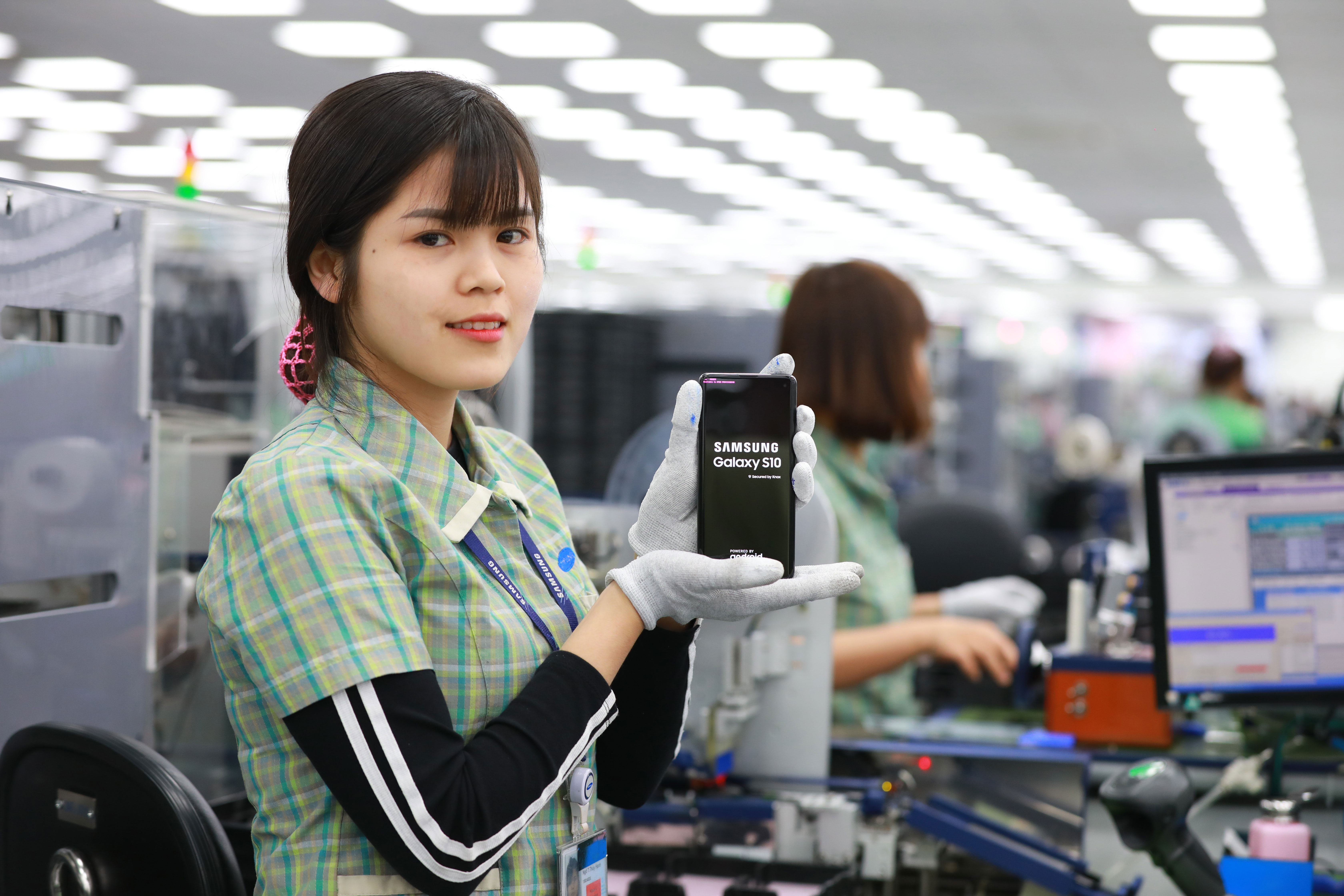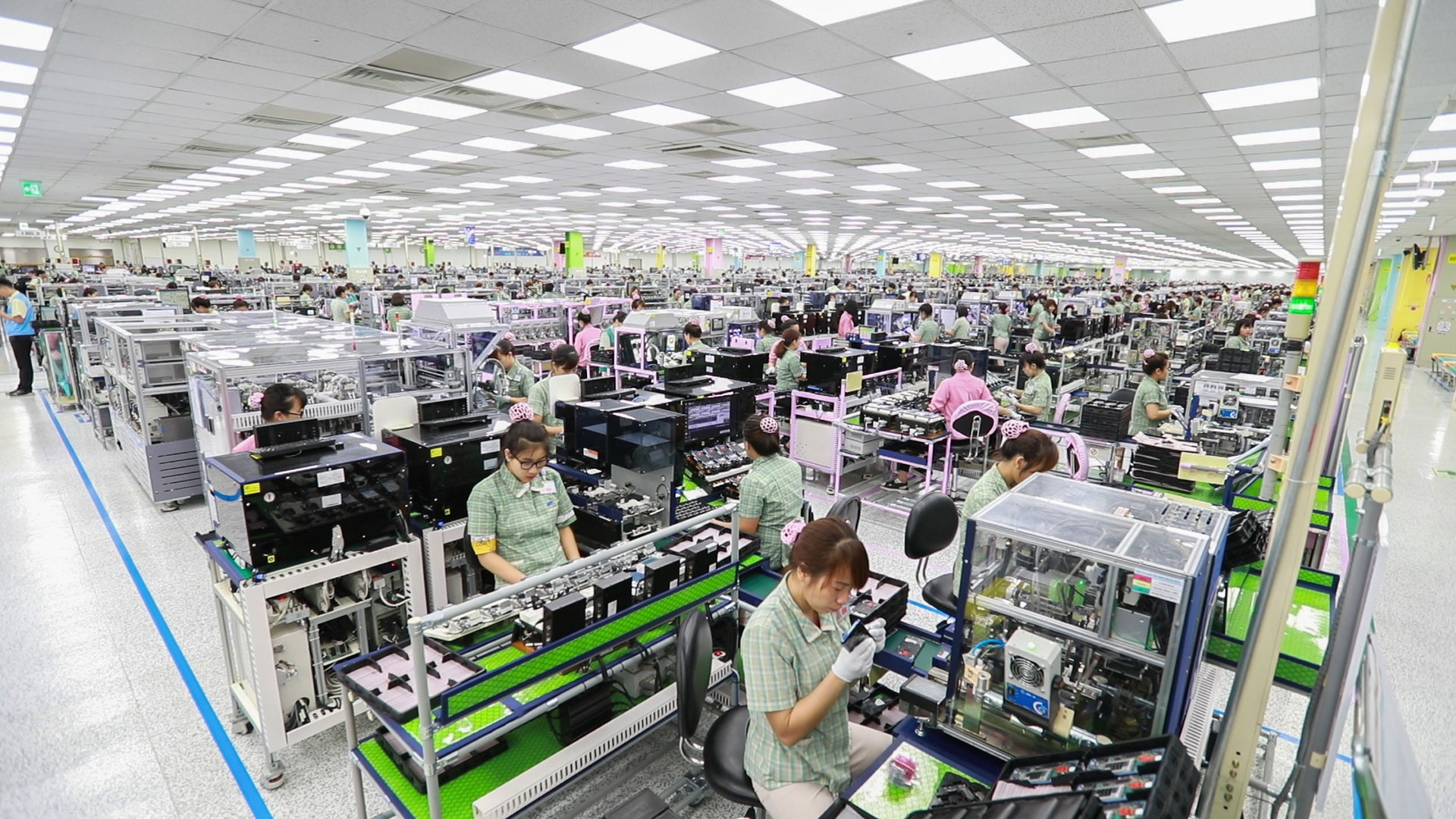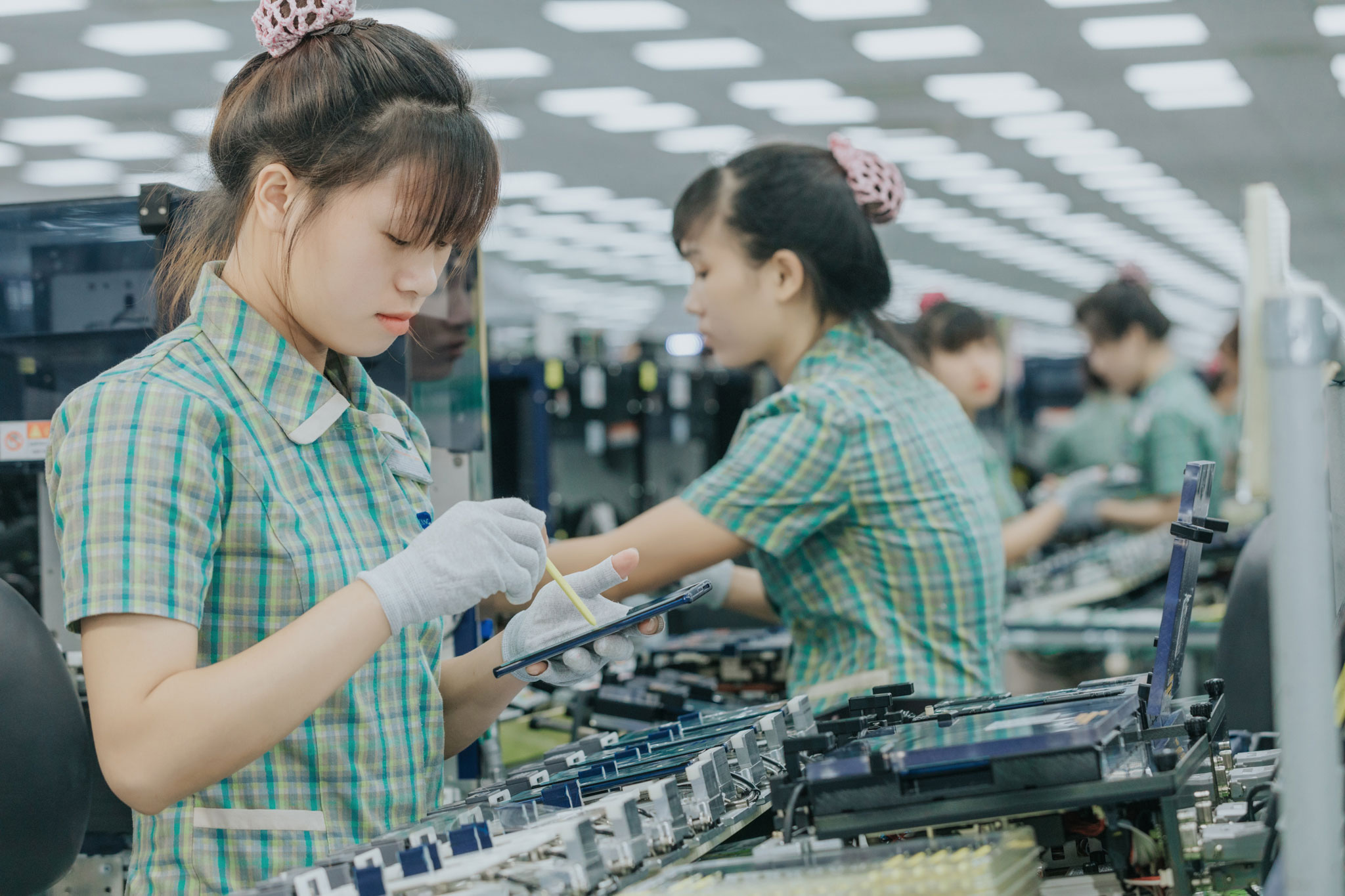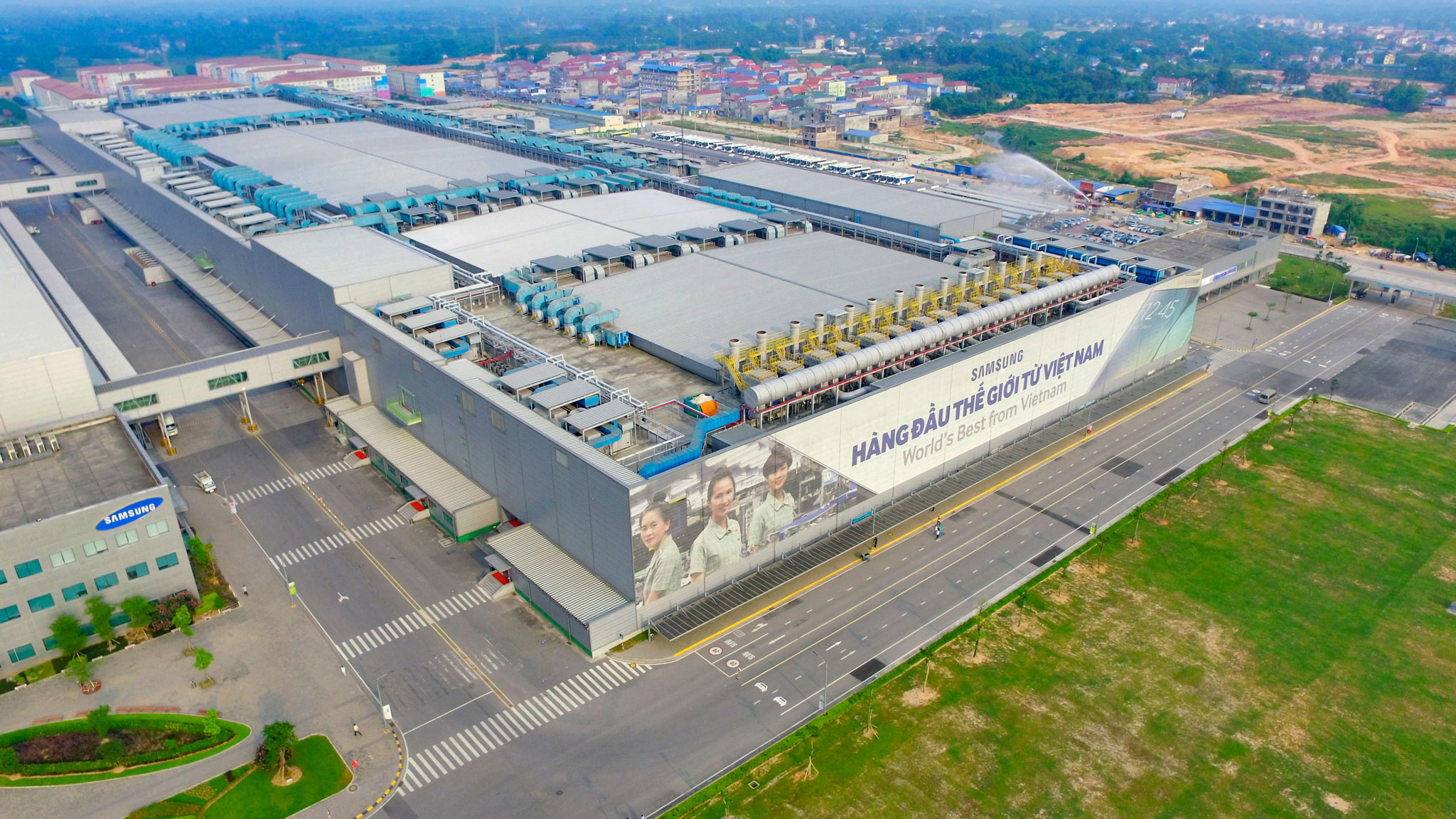
From trailblazer to leader of the biggest phone assembly factory in Vietnam
“The leader” is the term colleagues use for Hoang TrungThanh, Group leader of Main G department, the "heart" of the Samsung Thai Nguyen SEVT factory.
From one of the first employees who laid the foundations for Samsung in Vietnam, he currently commands an “army” of 8,000 people working day and night, building the most advanced phones in the world.
The person who "paved the way" in Samsung BacNinh
In 2008, Samsung received an investment license and began building the world's largest mobile phone factory at that time in BacNinh.
Opening the first factory in Vietnam proved difficult, despite the raw potential of the country, and in the early stages it needed a lot of people to "open doors" along the way.
Also in 2008, the first batch of technical staff including Hoang TrungThanh (born in 1982, a student of the Hanoi National University) was recruited by the factory with expectation of becoming the founders. Now, it has become one of the largest phone assembly factories in the world.
In a small room of about 20m2, taking advantage of a break, Thanh said that his affinity with Samsung began on 11/8/2008. At that time, only 5 months after Samsung received its investment license, the young man from PhuTho had just turned 26 and had been appointed line leader at the main factory - which was considered the "heart" of the operation where phones were completed for sale.
Thanh said that when he started working at Samsung BacNinh, the factory was still under construction, surrounded by nothing but fields. When the company started to recruit employees, the quality of personnel was not high. Completely new production lines combined with the fact that the first generation did not know much about electronics made the training period very difficult.

Additionally, at that time, many stages had to be assembled entirely by hand, which made Thanh and his colleagues extremely focused because if a mistake was made, the shipment would be returned. However, thanks to the strength of youth and their determination, he and his colleagues overcame those difficulties to contribute to creating a strong Samsung BacNinh manufactory, making mobile phones labeled "Made in Vietnam” and exporting them for the first time to the rest of the world.
Thanh still remembers the moment when he witnessed the first series of E1080 phones being completed. They were basic "brick" phones with traditional buttons, but for him and his colleagues, they were unforgettable "masterpieces".
It was a dream start, but also great responsibility, as in just 10 years, technology has made great strides, increasing in intensity and volume of jobs.
With leaders like Thanh, each product manufactured by Samsung Vietnam, from traditional phones in 2008 to the most modern devices such as the Galaxy S10 / S10 +, Note 10 / Note 10+, have to undergo stringent product testing procedures to meet high global standards.
Back in 2008, most employees were still very young. Many of them were fresh high school graduates and lived in rural areas, so there was a lack of discipline and concentration on the production line. That proved to be a challenge for leaders like Thanh.
However, now the quality of personnel at the company has significantly improved. Thanh said his employees learn and adapt very quickly, and sometimes it takes only 2-3 months of training for them to be able to operate the system smoothly, and establish working discipline.

The transformation of the "leader" of the main factory
Realizing that even though production had increased but was still not enough to meet the demand, at the end of 2013 Samsung established the Samsung Thai Nguyen manufactory (SEVT). In order for SEVT to come into operation in the most efficient way, in early 2014, Hoang TrungThanh and some colleagues packed their belongings to embark on a journey.

Explaining why he chose to work at SEVT when he already had a stable position at SEV main factory, hanh smiled and said: "It was voluntarily. Compared to 2008, the work was less challenging thanks to my experience. I also saw a similarity in distances from my home to Samsung Thai Nguyen, and to Samsung BacNinh".
However, the most difficult thing for Thanh at SEVT was the pressure of work when everything developed at an extremely fast pace. Samsung Thai Nguyen inherited most of its technologies and personnel from SEV, so the workload had significantly increased.
After securing his new position at SEVT, once again the nostalgic feelings of the first days at SEV returned, but Thanh felt different from 2008 because of a new-found pride in Vietnamese people who were meeting global expectations.
"We started by setting up the layout of each production line, receiving machinery from Korea and recruiting the first staff for SEVT. From the original first 500 employees, the main factory at SEVT today has nearly 8,000 people”, Thanh said.


Thanh also said that Vietnam has truly became a global production base for Samsung. It is not only because of the huge number of mobile phones produced here, but also initial stages of R&D and demo testing, prior to mass production.
During the first phase, due to a lack of experience and skills, Vietnamese were only able to participate in the final stage of mass production, following detailed instructions from South Korean experts. But now Vietnamese engineers have taken over from the first testing phase to research and test production in order to produce the best product samples before initiating mass production.
Currently, 50% of Samsung mobile devices are manufactured in Vietnam. Samsung has 8 manufactories all over the country, reaching export revenue of more than USD 60 billion and contributing 25% to Vietnam's total export turnover in 2018.
For Thanh, his greatest joy during 10 years at Samsung Vietnam is to see “Made in Vietnam” phones being sold all over the world. In February 2018, Thanh and some of his colleagues went to Spain to attend the launch of the Galaxy S9 / S9 + smartphones.Seeing foreign experts admiring their product at that time, Thanh trembled with joy. His pride was multiplied when the tech world discovered these products were made by Vietnamese people.

According to Samsung statistics, their “Made in Vietnam” flagship phones have been exported to 128 countries and territories around the world. Thanh is immensely proud that Vietnamese-made products are globally accepted. He truly feels the last 10 years for him and his colleagues have been well-spent./.